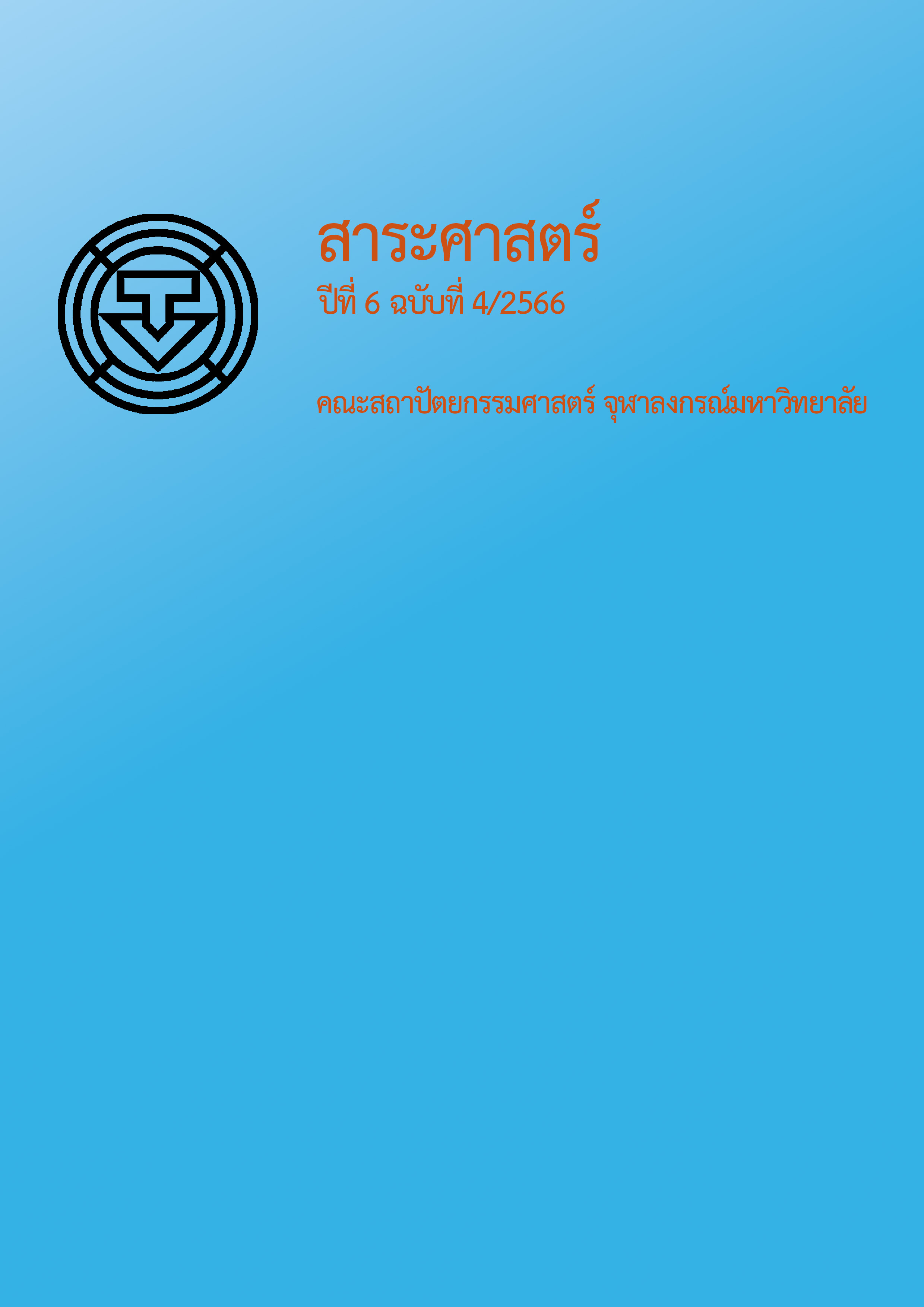COVID-19 Impact on Workplace : A Case Study of 3 Groups of Employees Working in the Head Office of Major Commercial Banks in Bangkok
Main Article Content
Abstract
Since COVID-19 has been announced as a global pandemic and its outbreak has been caused to social distancing methodology, it was concerned how to prevent the pandemic by considering the new way of workplace utilization. To maintain business continuity management and reduce the risk of COVID-19 spreading, most organizations has been released the work-from-home policy, including the changes in office space. The objective of this article aims to study the work pattern and the factors that impact office utilization during the COVID-19 situation. The questionnaire served as an instrumental tool for data collection, facilitating the acquisition of responses from a sample of employees in three commercial banks located in Bangkok. Subsequently, employing the technique of descriptive statistics, the collected data underwent meticulous analysis and were summarized.
The study has shown that there were 3 work patterns during the COVID-19 situation, employees work in an office, employees work from home, and employees work in an alternative work environment that is neither the office nor the home. The factors that had a high impact on office utilization in all banks are the meeting with external organizations, the testing of systems or equipment, and the connectivity of the organization system. All case studies had a high level of positive correlation coefficient. The positive correlation coefficient suggests that with increasing levels of necessity for these factors, there is a corresponding increase in office utilization. The result of the study will be the key for the facility management to allocate the office space efficiently once the pandemic caused severe illness in the future.
Article Details
References
กรมควบคุมโรค. (2563). กรมควบคุมโรคแนะประชาชนเพิ่มระยะห่างทางสังคม “social distancing” กับ 8 วิธี ป้องกันโรคโควิด-19.https://ddc.moph.go.th/ brc/news.php?news=12278&deptcode=brc
ฉัฐวัฒน์ ชัชณาภัฏฐ์. (2563). การจัดการองค์การในภาวะวิกฤต กรณีโรคติดเชื้อไวรัส COVID-19.วารสารวิชาการธรรมทรรศน์, 20(4), 197-207.
ธนาคารแห่งประเทศไทย. (2564a). ประกาศธนาคารแห่งประเทศไทยที่ สนส.11/2564 เรื่องรายชื่อธนาคารพาณิชย์ที่มีความสำคัญต่อระบบ (Domestic Systemically Important Banks : D-SIBs). https://www.bot.or.th/Thai/FIPCS/Documents/FPG/2564/ThaiPDF/25640149.pdf
ธนาคารแห่งประเทศไทย. (2564b). มาตรการช่วยเหลือลูกหนี้รายย่อยที่ได้รับผลกระทบจากโรคโควิด 19. https://www.bot.or.th/covid19/Pages/content/retail/measures/default.aspx
ปิยพร อรุณเกรียงไกร. (2560). แบงก์ชาติคุมเข้ม 5 ธนาคารใหญ่ ป้องกันความเสี่ยง เพิ่มเสถียรภาพทางเศรษฐกิจ. https://thestandard.co/bot-domestic-systemically-important-banks/
พิมพ์นารา หิรัญกสิ. (2565). ถอดบทเรียน Work-from-Home ช่วงโควิด-19 สู่การทำงานที่ยืดหยุ่นในอนาคต (ธนาคารกรุงศรีฯ). https://www.krungsri.com/th/research/research-intelligence/work-from-home-22
ราชบัณฑิตยสถาน. (2546). พจนานุกรมฉบับราชบัณฑิตยสถาน พ.ศ. 2542. นานมีบุ๊คส์พับลิเคชั่น.
วัลยา พัฒนพีระเดช. (2562). เอกสารประกอบการสอนวิชา 2501605 สถาปัตยกรรมเบื้องต้น [เอกสารที่ไม่ได้ตีพิมพ์]. ภาควิชาสถาปัตยกรรมศาสตร์ คณะสถาปัตยกรรมศาสตร์ จุฬาลงกรณ์มหาวิทยาลัย.
เสริชย์ โชติพานิช และวัลยา พัฒนพีระเดช. (2563). การบริหารทรัพยากรกายภาพเชิงกลยุทธ์. สำนักพิมพ์แห่งจุฬาลงกรณ์มหาวิทยาลัย.
Doeffler, R. K. (2013). Tools for collaborative and interactive workplace solutions. https://www.ifmaseattle.org/symposium/2013/2013-doefler-workplace.pdf
Duffy, F. (1997). The new office. Conran Octopus.
Hinkle, D. E., William, W., & Stephen, G. J. (1998). Applied statistics for the behavior sciences (4th ed.). Houghton Mifflin.


